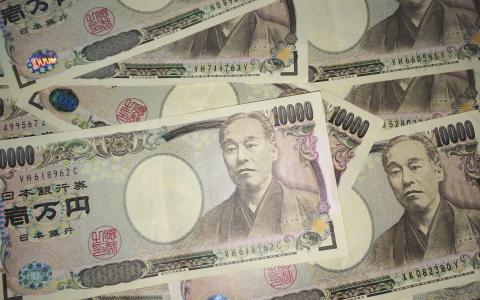
(Bloomberg) - The recent unwinding in carry trades has more room to run as the yen remains one of the most undervalued currencies, according to JPMorgan Chase & Co.
“We are not done by any stretch,” Arindam Sandilya, co-head of global FX strategy, said on Bloomberg TV. “The carry trade unwind, at least within the speculative investing community, is somewhere between 50%-60% complete.”
The trade has been pummeled this past week as yen volatility jumped amid fears of a looming US recession and after the Bank of Japan’s rate hike.
Yen carry trades — borrowing at low rates in Japan to fund purchases of higher-yielding assets elsewhere — have long been popular among investors as volatility remained low and traders bet Japanese interest rates would remain at rock bottom. But an 11% appreciation in the yen against the dollar over the past month has turned many of those trades into money-losers.
The subsequent rush to close out short yen positions has jolted both emerging and developed markets that used to be destinations for investors deploying the strategy for higher returns. The Mexican peso, one of the biggest victims of the unwinding of the trade, extended its decline on Tuesday, with losses reaching 6.8% over the past month, the most among major world currencies tracked by Bloomberg.
A recovery in carry trades to levels prior to the yen’s rally is unlikely anytime soon as the technical damage inflicted on portfolios from the short, sharp move “is not easily undone,” Sandilya said.
“A good case outcome is stabilization in markets around current levels, maybe a shallow recovery at best,” he said. “But in many of these instances you tend to get continuation of the moves, if at a lower velocity than what you had before.”
What Bloomberg Economists Say...
“The yen carry trade appears to be unwinding at the fastest pace since the currency surged in 2007 after the onset of the sub-prime mortgage crisis. We’ve been alert to the risk of a sharp reversal in the currency’s fortunes since March – and now it’s materializing. Our model shows that fear of a US slowdown is the main driver, not so much the recent rate hikes by the Bank of Japan. The yen’s moves from here probably depend mostly on how the US economy evolves and how policymakers at the Federal Reserve react.”
— Taro Kimura, senior Japan economist
According to data last week from the Commodity Futures Trading Commission, which regulates the US derivatives markets, an unwinding of yen shorts was already well underway before Monday’s selloff, if not yet complete. Before the Bank of Japan rose interest rates on July 31, leveraged funds were increasing their wagers on further declines in the yen, according to the data.
By Matthew Burgess
With assistance from Paul Allen and Peter Laca



